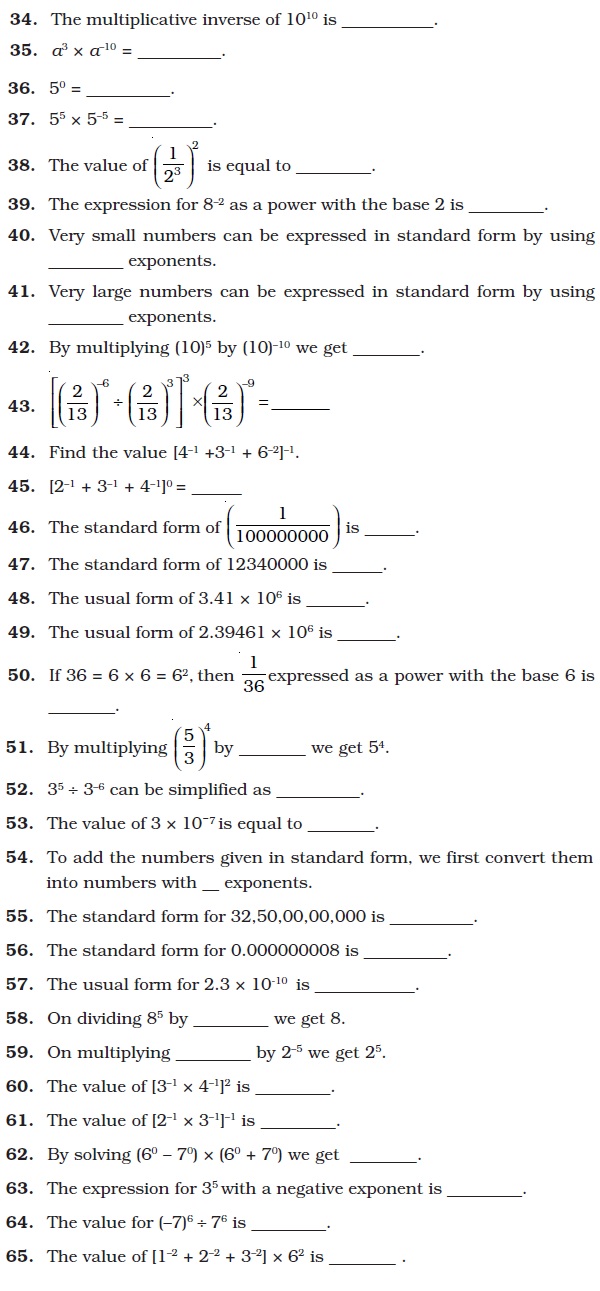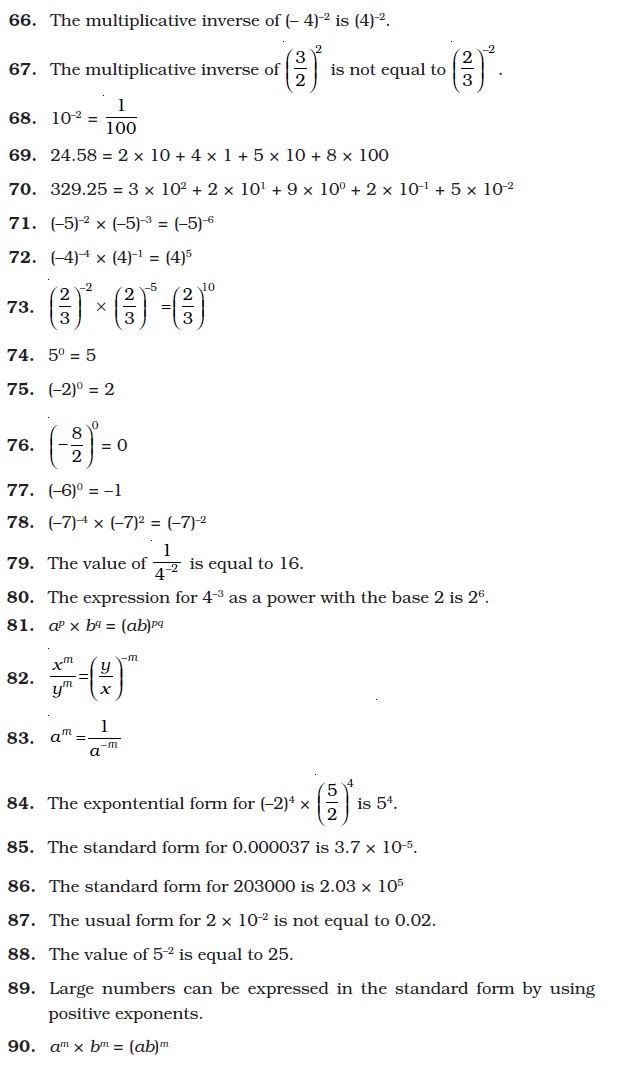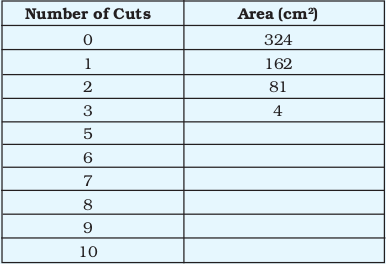Candidates can download NCERT Exemplar Class 8 Maths Unit 8 from this page. The exemplar has been provided by the National Council of Educational Research & Training (NCERT) and the candidates can check it from below for free of cost. It contains objective, very short answer type, short answer type, and long answer type questions. Along with it, the answer for each question has also been provided. From the NCERT Exemplar Class 8 Maths Unit 8, candidates can understand the level and type of questions that are asked in the exam.
NCERT Exemplar Class 8 Maths Unit 8 Exponents and Powers
NCERT Class 8 Maths Unit 8 is for Exponents and Powers. The type of questions that will be asked from NCERT Class 8 Maths Unit 8 are displayed in the below provided NCERT Exemplar Class 8 Maths Unit 8. With the help of it, candidates can prepare well for the examination.
Also Check: NCERT Solutions for Class 8 Maths
Main Concepts and Results
- Exponential notation is a powerful way to express repeated multiplication of the same number. Specifically, powers of 10 express very large and very small numbers in a manner which is convenient to read, write and compare.
- For any non-zero integer a,

- Laws of exponents are

- Numbers can be expressed in expanded form by using exponents
- Very large and very small numbers can be expressed in standard form.
- Standard form is also called scientific notation form.
Solved Examples
In example 1 and 2, there are four options given out of which one is
correct. Write the correct answer.

In examples 3 to 5, fill in the blanks to make the statements true.

In examples 6 and 7, state whether the statements are true (T) or false (F):




Think and Discuss
- Try to find the value of x in the question by changing – 5 to 2. What difference do you find in the value of x ? What do you infer from your answer?
- See if you can find the value of x if the equation is changed to

Getting Red of Negative Exponenets in Factors

Multiple Choice Questions

Fill in the Blanks Type Questions

True False Type Questions

Short Answer Type Questions

Activites
Activity 1
To make ballot papers for the upcoming school elections, cut a sheet of paper in half. Stack the two pieces and cut them in half again. Stack the resulting four pieces and cut them in half again. Repeat this process, creating smaller sized ballot papers.

Now, answer the following
(a) Can you predict the number of ballot papers after n number of cuts?
(b) Suppose you could make 40 cuts. How many ballot papers would you have?
(c) How many cuts would it take to make enough ballot papers for 512 students at school?
(d) Suppose you start with a sheet of paper having area 324 cm2. Copy and complete the table to show the area of each ballot paper after each of the first 10 cuts.

Observe the table and write an expression which gives the area of ballot papers after n number of cuts on sheet of given area A.
(e) If you want 512 ballot papers each having area 16 cm2, then what will be the area of starting paper?
Activity 2
1. To meke ballot papers cut a sheet of paper into three. Stack the three pieces and cut the stack into three. Stack all the pieces and cut the stack into three again.

(a) Complete the table to show the number of ballot papers after five such steps:

(b) Suppose you continue this process. How many ballot papers would you have after 15 steps? How many would you have after n cuts?
(c) How many steps would it take to make at least one lakh ballot paper?
Crossword
Across
(1) In xm × xn = xp , p is the _________ of m and n.

Down
(5) The value of 3⁻³


Click here to download the NCERT Exemplar Class 8 Maths Unit 8 Exponents and Powers
Answers to Multiple Choice Questions














Activities
Activity 1

Activity 2

To get study material, exam alerts and news, join our Whatsapp Channel.

